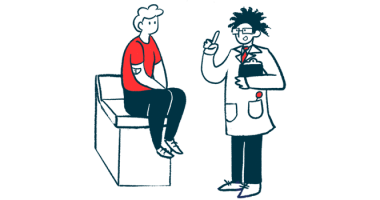‘Silent’ Lesions on MRIs, While Rare With Remission, Warn of Relapse

Asymptomatic, or “silent,” MRI lesions are not common during disease remission in patients with aquaporin-4 antibody neuromyelitis optica spectrum disorder (AQP4-NMOSD) and myelin oligodendrocyte glycoprotein antibody disease (MOGAD), but are associated with imminent relapse when they do occur, according to a recent U.K. study.
“Results of this cohort study suggest that new remission silent lesions are rare on follow-up scans in MOGAD and AQP4-NMOSD and appear to indicate a high risk of imminent relapse,” the researchers wrote.
The study, “Frequency of New Silent MRI Lesions in Myelin Oligodendrocyte Glycoprotein Antibody Disease and Aquaporin-4 Antibody Neuromyelitis Optica Spectrum Disorder,” was published in JAMA Network Open.
Both AQP4-NMOSD and MOGAD are autoimmune diseases marked by attacks on cells of the nervous system. Both are characterized primarily by damage to the optic nerve, which connects the eyes and brain.
These two diseases share clinical features and MRI similarities with multiple sclerosis (MS), including optic nerve damage and periods of relapses and remissions.
Silent MRI lesions often appear during MS remission, and are used to diagnose MS and monitor treatment success. In AQP4-NMOSD and MOGAD, such lesions have been observed during relapses but rarely reported during remission.
To understand how common silent lesions are in AQP4-NMOSD and MOGAD and whether they are associated with relapses, a team led by researchers at Oxford University Hospitals NHS Trust analyzed brain and spinal cord MRI and clinical data from 404 patients across all age groups. Clinical MRIs were performed during an attack or relapse and during remission.
Among the 182 MOGAD patients, 62% were female and 27% (49 people) had a pediatric onset. This group’s median age at disease onset was 28. Of the 222 AQP4-NMOSD patients, 85% were female, with a median disease onset at age 43, and 12.6% (28 patients) had a pediatric onset.
New silent MRI lesions were reported during relapses in both groups, with fewer reported among AQP4-NMOSD patients. In that group, lesions were found in 18.7% (88 out of 470) of relapse MRIs, whereas 33% (97 of 296) of MOGAD relapse MRIs indicated lesion presence.
Few lesions were found in either group during periods of remission, with lesions observed in 3.0% (five of 167) of MOGAD MRIs and 2.6% (seven of 269) of AQP4-NMOSD MRIs.
The higher proportion of lesions observed in the MOGAD group may be related to the relatively lower number of these patients on immunosuppressant treatments compared with AQP4-NMOSD patients, the researchers noted.
Among AQP4-NMOSD patients, median time from remission MRI to a relapse was five months when new remission lesions were present, and 85 months (about seven years) for those without new lesions. A similar observation was made in the MOGAD group, where median time from remission MRI to relapse was two months in the presence of new lesions and 73 months (about six years) in the absence of new lesions.
Of the seven AQP4-NMOSD patients who experienced new remission silent lesions, five had symptomatic lesions in the scan taken during the next relapse. This means that “when silent remission lesions occur, they may not remain silent,” the researchers wrote, which could contribute to the faster occurrence of relapse in these patients.
New remission lesions were also determined to be inflammatory in nature, which is consistent with their association with imminent relapse.
“The remission new lesions appeared to precede imminent relapses in both cohorts,” the researchers wrote. “Many of the ‘silent’ lesions subsequently became symptomatic.”
Overall, since new remission lesions are unusual, they may not be as useful for monitoring treatment outcomes or disease progression with MOGAD or AQP4-NMOSD as they are for MS, the researchers noted.
“Lesion activity is rare in [MOGAD and AQP4-NMOSD] within current clinical practice and would not be an appropriate outcome in a clinical trial nor useful in routine monitoring of treatments; nevertheless, new remission lesions, when they do occur, would be a cause for concern,” the team concluded.







